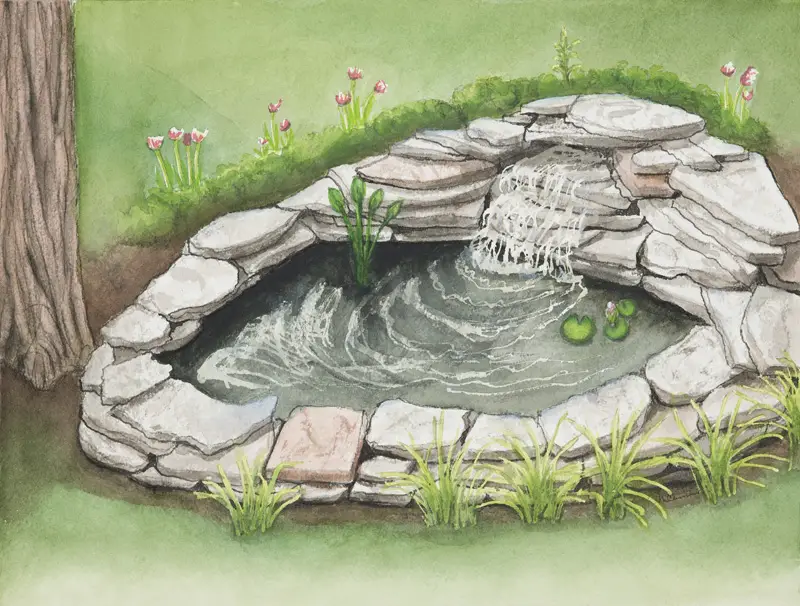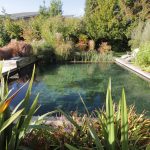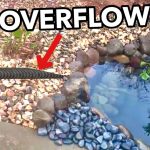Adding a small pond to your yard can transform it into a tranquil oasis and provide a haven for local wildlife. Whether you want to create a peaceful retreat, attract birds and butterflies, or simply add visual interest to your outdoor space, building a small pond is a rewarding and enjoyable project. In this guide, we’ll walk you through the steps to create your own beautiful and thriving pond.
1. Planning and Design
Before you start digging, take some time to plan and design your small pond. Consider the location, size, and shape of the pond. Choose a spot that receives a good balance of sunlight and shade, as this will help support a healthy ecosystem within the pond. Sketch out your ideas and think about how the pond will fit into your overall landscape design.
Location:
When selecting the location for your pond, try to find a spot that is visible from your home and frequently used outdoor areas. This will allow you to enjoy the beauty of the pond from various vantage points. Additionally, consider the proximity to trees, as falling leaves can create maintenance challenges.
Size And Shape:
The size and shape of your pond will depend on the available space and your personal preferences. A small, informal pond with natural curves can create a more organic and relaxed feel, while a formal, geometric shape can lend a more structured and contemporary look to your yard.

Credit: www.youtube.com
2. Digging the Pond
Once you have finalized your design, it’s time to start digging. Use a garden hose or spray paint to outline the shape of the pond on the ground. Then, carefully start digging within the marked area. The depth of the pond will depend on the types of plants and wildlife you plan to include. A depth of 18 to 24 inches is suitable for most small ponds.
Excavation Tips:
- Use a spade or a shovel to remove the soil, and periodically check the depth using a tape measure.
- As you dig, create shelves or ledges along the sides of the pond to accommodate different types of aquatic plants and provide easy access for wildlife.
- Make sure the edges of the pond are gently sloped to allow easy entry and exit for animals and prevent them from becoming trapped.

Credit: www.thisoldhouse.com
3. Installing the Pond Liner
Once the excavation is complete, it’s time to install the pond liner. A high-quality pond liner is essential for preventing water from seeping into the surrounding soil. Choose a durable, fish-safe liner that is appropriate for the size and shape of your pond.
Liner Installation Steps:
- Spread the liner over the excavated area, making sure to leave some excess material around the edges to account for settling and shaping.
- Gently press the liner into the contours of the pond, smoothing out any wrinkles or folds.
- Secure the liner in place with rocks or bricks along the edges, and trim any excess material with scissors or a utility knife.
4. Adding Water and Filtration
Now that the liner is in place, it’s time to fill the pond with water. Use a garden hose to slowly and carefully fill the pond, allowing the liner to settle and conform to the shape of the excavation. Once the pond is filled, it’s important to consider filtration and circulation to maintain water quality and support a healthy ecosystem.
Water Quality Tips:
- Consider adding a small pump and filter system to help keep the water clean and oxygenated.
- Introduce beneficial bacteria to help break down organic matter and prevent the buildup of algae and other unwanted substances.
- Monitor the water quality regularly and perform necessary maintenance to ensure the pond remains a thriving environment for plants and wildlife.
5. Planting and Landscaping
With the pond filled and the water quality addressed, it’s time to add aquatic plants and incorporate landscaping elements to enhance the beauty of the pond. Consider a variety of plants, such as water lilies, lotus, cattails, and submerged oxygenators, to provide habitat for wildlife and create a visually appealing display.
Planting Tips:
- Plant aquatic vegetation in containers filled with aquatic soil to help control growth and prevent the spread of invasive species.
- Strategically place rocks, driftwood, and other natural elements around the pond to create a more natural and inviting environment for wildlife.
- Consider adding a mix of floating, marginal, and submerged plants to create different layers and habitats within the pond.
6. Maintenance and Care
Once your small pond is established, it’s important to establish a regular maintenance routine to keep it healthy and thriving. Routine maintenance tasks may include removing debris, trimming plants, and monitoring water quality. Additionally, consider seasonal tasks such as winterizing the pond to protect it from freezing temperatures.
Maintenance Guidelines:
- Remove fallen leaves and debris from the surface of the pond to prevent them from decomposing and affecting water quality.
- Trim and thin out aquatic plants as needed to prevent overcrowding and maintain a balanced ecosystem.
- Protect the pond from extreme temperatures by installing a pond heater or using a floating de-icer in winter.
7. Enjoying Your Pond
With your small pond in place and thriving, take the time to sit back, relax, and enjoy the beauty and tranquility it brings to your yard. Whether you’re watching colorful fish swimming among the plants, listening to the soothing sound of a small waterfall, or observing visiting birds and butterflies, your small pond is sure to become a cherished feature of your outdoor space.
Building a small pond in your yard is a fulfilling and rewarding endeavor that can bring a touch of nature and serenity to your home. By carefully planning, designing, and maintaining your pond, you can create a thriving ecosystem that enhances the beauty of your yard and provides a welcoming habitat for local wildlife. Follow these steps and enjoy the process of creating your own little piece of paradise right outside your door.
Are you ready to take the plunge and build your own small pond? With these guidelines and tips, you can embark on this exciting project and create a stunning water feature that will delight you and your family for years to come.





